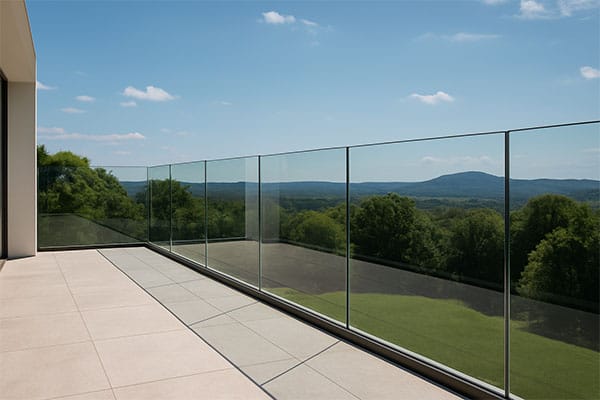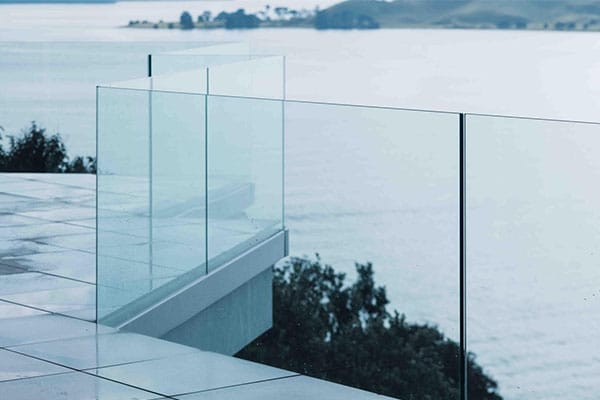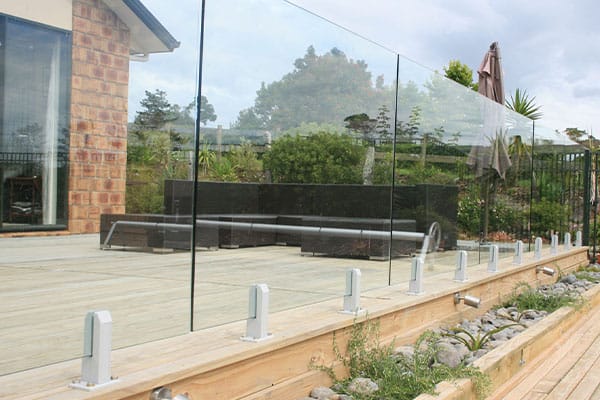

Ask ten architects why they reach for frameless glass and you’ll hear the same themes delivered in different accents: light, clarity, uninterrupted sight-lines. A glazed edge lets a room breathe; a terrace feels larger because the eye isn’t fighting posts and rails; stair voids read as clean vertical space rather than a cage. All of that elegance is only worth having if the barrier is trustworthy when someone leans on it or a child presses a toy car along the top.
The safety question is not an awkward afterthought; it’s the design brief. When people talk about frameless glass balustrade safety, what they really want to know is whether a minimalist detail can behave like a robust guardrail on a wet, windy Tuesday in February, ten years after handover. The short answer is yes provided the system is designed, specified and installed to the right standard, and cared for in a way that respects how it actually carries load.
In the UK, you won’t get far without two documents: Approved Document K (for protection from falling) and BS 6180, which sets out how barriers should perform. The headlines are straightforward enough to remember: internal stairs and landings need a finished height of at least 900 mm, while balconies, roof terraces and any edge with a drop over 600 mm must be 1,100 mm.

Openings must not admit a 100 mm sphere anywhere along the run, which is as much about base detailing and cover trims as it is about gaps between panels. Loads are expressed in three flavours—line loads along the top edge, uniformly distributed infill loads on the panel itself, and point loads for localised impacts.
A domestic balcony, for example, is commonly designed for a line load around 0.74 kN/m; internal runs in single dwellings sit lower, but the principle is the same: the system must resist people leaning, bumping and gathering at the edge without frightening deflections or loss of integrity.
The crucial safety pivot for frameless work is the glass type. If there is no continuous handrail tying panels together, the glass cannot be monolithic toughened alone. BS 6180 is clear that, in those circumstances, you need laminated safety glass so the barrier remains in place after breakage.
The aim is not to make glass unbreakable nothing is but to ensure that a damaged pane still behaves as a barrier while it awaits replacement. A well-designed system does more than satisfy the letter of the code; it feels solid under a steady push, it moves predictably under transient loads like wind, and it anchors into a substrate that can genuinely take the forces you’re asking it to carry.
The strength and safety of frameless glass balustrades depend on the precise engineering of the glass and the base fixings.
A frameless balustrade is a cantilever in disguise. The glass is clamped at the base and acts like a beam lifting a line load at its top edge. That simple statement hides a lot of engineering. Start with the pane: in most residential settings you’re looking at toughened-laminated make-ups such as 17.5 mm or 21.5 mm, chosen after someone has checked span, exposure and deflection criteria.
The lamination is not a cosmetic choice; it is the mechanism that keeps the barrier “there” even if one ply fails, and it is central to the conversation about frameless glass balustrade safety. Interlayers matter too. Standard PVB is adequate for many interiors, but stiffer ionoplast interlayers are prized outdoors and where deflection needs to be tightly controlled because they help the two plies behave more like a single, thicker sheet.

Now consider the base. The channel is not an extrusion you pick from a catalogue and hope for the best; it is a tested assembly with a defined glass thickness, wedge geometry and fixing pattern. Good systems use dry-glaze technology that allows fine adjustment during installation and, later in life, replacement of an individual pane without dismantling the entire run. The channel itself must be fixed to something worthy of the name “structure”.
Resin anchors into sound concrete with proper edge distances behave very differently from coach screws into speculative timber packers. Outdoors, every visible fastener should be A4/316 stainless, and the waterproofing should be lapped and dressed into the channel detail so water can’t sit where it will quietly shorten the life of gaskets and sealants. When all of this is done with discipline, the result feels calm under the hand. Serviceability is half the battle: a barrier that technically passes but sways like a deckchair will make users nervous, so deflection control is as important as ultimate strength.
read more: Best Glass Types for Balustrades
Tempered (toughened) glass earns its place here because it provides four to five times the bending strength of annealed glass and, if it does fail, it granulates into small, blunt particles rather than long knives.
On its own, that is not enough for a frameless detail, but in combination two toughened plies bonded around an interlayer it becomes the backbone of a safe, minimal design. Lamination gives the panel a second life after damage: a ball strike, a dropped bottle, a thermal shock that cracks one ply none of these events are desirable, yet in a laminated sheet the interlayer continues to support load and keep fragments in place. That is why the standards insist on it where there is no continuous top rail.
Beyond raw safety, laminated glass opens useful options. Acoustic interlayers blunt tramlines and busy roads so terraces feel more like rooms than platforms. Low-iron compositions take away the green cast that can appear in thicker edges and make multi-panel runs look crystalline.

Heat-soak testing reduces the already low risk of spontaneous breakage from nickel sulphide inclusions in toughened glass, a small premium many designers consider cheap insurance on exposed edges.
Edge durability is part of the story as well. Ionoplast interlayers tend to resist long-term moisture better than standard PVB, which means clearer edges years after installation if the detailing keeps water moving. The cumulative effect of these choices is a barrier that performs on paper and continues to feel reassuring in daily use.
Minimalism is not the absence of engineering; it is engineering without fuss. The same logic applies to maintenance. Frameless systems last decades when you treat them as the working components they are. The routine is simple and doesn’t need specialist equipment.
Keep channels clean and let water leave. A handful of wind-blown leaves or a line of silt can hold moisture against gaskets and the lower edge of the glass for weeks; moving that debris on a quiet Saturday morning does more good than any expensive cleaner.
Wedge gaskets settle slightly in their first months, so a first-year visit to check tension is smart; after that, an annual look during a spring clean is usually enough to spot UV cracking, shrinkage or a loosened fixing that wants attention before it grows into a rattle.
Cleaning the glass itself is a matter of order rather than force. Rinse to clear grit, wash with a pH-neutral solution, then rinse and dry to avoid mineral spots.
In hard-water areas a final pass with de-ionised water keeps the finish clearer for longer. Keep solvent-heavy products away from the edges where sealants live, and resist the temptation to “polish out” a stubborn mark with abrasives; that is how haze is born.
Stainless steel posts, cover trims and visible fixings enjoy the same routine: rinse, mild detergent, wipe with the grain, rinse again.
If you are near the sea or a pool, a thin protective film from a specialist stainless care product slows tea-staining noticeably. And if the terrace doubles as a planter zone, avoid burying the channel behind soil or mulch give the base a few millimetres of breathing space so air can dry it and the weeps can work.
Timber caps on glass are not structural in frameless work, but they do take the hand and set the tone. Their longevity is almost entirely about finish management. Refresh oil before it fails rather than after; once a varnish has broken down it will ask you to sand back more than you’d like. End grain wants sealing the same day it is exposed during any repair or adjustment. None of this is complicated, but it keeps the aesthetic promise of the detail intact and, more importantly, it protects the interfaces that carry the loads you designed for.
There is one further habit that costs nothing and pays off whenever you need advice or a warranty: take photographs. A handful of dated images when the balustrade was new, after the first winter, after a particularly salty week on the coast gives you a record of what “normal” looks like on your site. If something does begin to change, you will see the trend rather than the panic, and a fabricator or installer can be precise about next steps.
Frameless balustrades endure because they resolve a tension we all recognise: the wish for openness against the need for protection. They succeed when key choices are made with care: laminated instead of monolithic glass, an interlayer suited to exposure, a tested base channel, reliable anchors, and drainage and isolation details that prevent water and dissimilar metals from causing damage.
Do that, and with simple maintenance the minimal line will feel as secure in year ten as it did on day one. That is frameless glass balustrade safety in practice: not a brochure claim, but decisions that build confidence whenever someone leans on the glass.


Send us your contact details and a specialist will get in touch with you.